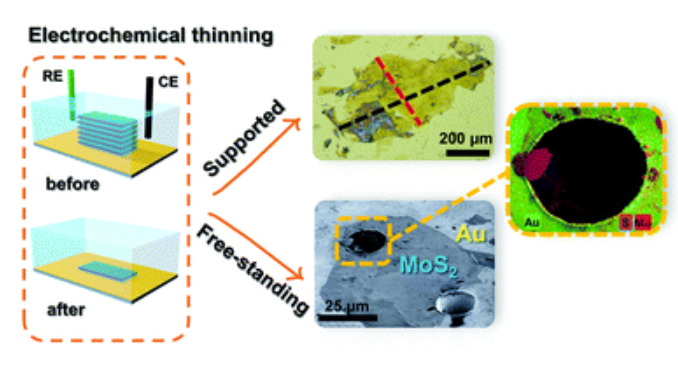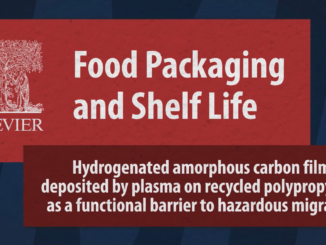
Fast and efficient electrochemical thinning of ultra-large supported and free-standing MoS2 layers on gold surfaces
Abstract: Molybdenum disulfide (MoS2) is a very promising layered material for electrical, optical, and electrochemical applications because of its unique and outstanding properties. To unlock its full potential, among different preparation routes, electrochemistry has gain interest due to its simple, fast, scalable and simple instrumentation. However, obtaining large-area monolayer MoS2 that will enable the fabrication of novel electronic and electrochemical devices is still challenging. In this work, we reported a simple and fast electrochemical thinning process that results in ultra-large MoS2 down to monolayer on Au surfaces. The high affinity of MoS2 by Au surfaces enables the removal of bulk layers while preserving the first layer attached to the electrode. With a proper choice of the applied potential, more than 90% of the bulk regions can be removed from large-area MoS2 crystals, as confirmed by atomic force microscopy, photoluminescence, and Raman spectroscopy. We further address a set of contributions that are helpful to elucidate the features of MoS2, namely, the hyphenation of electrochemistry and optical microscopy for real-time observation of the thinning process that was revealed to occur from the edges to the center of the flake, an image treatment to estimate the thinning area and thinning rate, and the preparation of free-standing MoS2 layers by electrochemically thinning bulk flakes on microhole-structured Ni/Au meshes.
Author(s): de Freitas, N.; Florindo, B. R.; Freitas, V. M. S.; Piazzetta, M. H. D.; Ospina, C. A.; Bettini, J.; Strauss, M.; Leite, E. R.; Gobbi, A. L.; Lima, R. S.; Santhiago, M.
Nanoscale
Published: 21 Mar 2022
DOI: https://doi.org/10.1039/D2NR00491G
CDMF
The CDMF, hosted at the Federal University of São Carlos (UFSCar), is one of the Research, Innovation and Dissemination Centers (RIDC) supported by the São Paulo State Research Support Foundation (Fapesp), and also receives investment from the National Council Scientific and Technological Development (CNPq), from the National Institute of Science and Technology of Materials in Nanotechnology (INCTMN).




